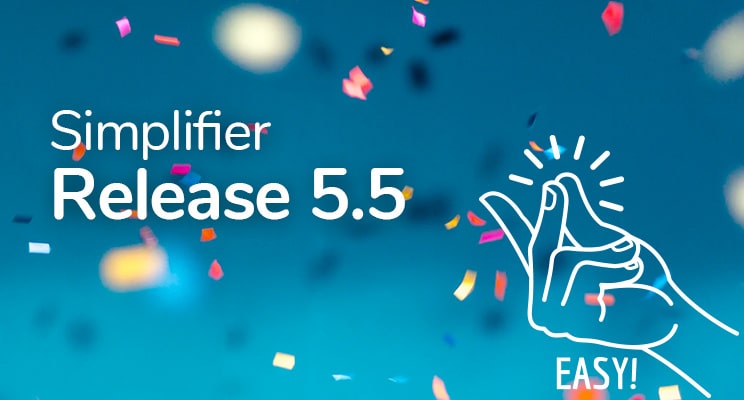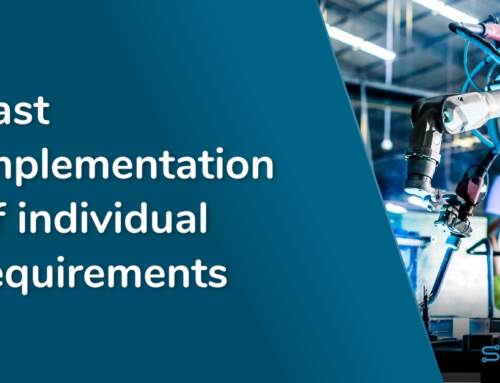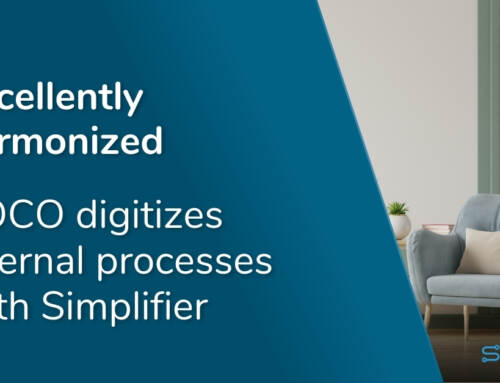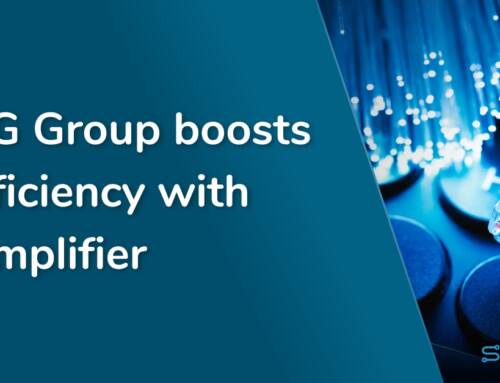With release 5.0 (January 2020) we have concentrated on how Low-Coders can be enabled to build an app UI much easier and faster than before. For this we integrated the WYSIWYG-Editor and a real-time preview (Live Preview). With the new 5.5 release we broke the ground so that No-Coder have a toolset for configuring screen layouts and integrating new and existing databases into their app each with just a few clicks.
Reading time: Approximately 4 min.
We have done a lot to ease the use of our low-code platform so that everyone can get results faster when building applications. But to be honest, Citizen Developers belong to a multifunctional team, consisting of Pro-Coders, Low-Coders and – of course as well – No-Coders. But the latter in particular need to be even more involved into this process. Our most important features of version 5.5 – widget groups and data service – will support them effectively in this process.
A low-code-platform for no-coders – challenge accepted
As many of our customers have told us that our new WYSIWYG editor is awesome but most of their citizen developers fail because they have to know how to create horizontal and vertical layouts to place the given widgets, it sounded strange to us. But yes, they were absolutely right. For the most Pro-Coders that are using Simplifier to build screen layouts it is more than easy to create the app UI going this way. But if you never heard about this or did not learn to build it this way, you will not be able – or it’s more difficult – to build your UI for each screen that you need in your app.
The same became clear to us when we talked about the advantages of the new DB Designer. Yes, of course, with this it is much easier to create new databases if you need it for your app. But the same situation here, Pro- and Low-Coders are happy to have this feature, well, but to integrate a database into the app is not that easy if you don’t know about SQL statements that allow you to read, write oder delete data from your database.
At the end we had to think about a no-code approach, which actually makes it easy to rethink these issues and find a solution to solve them via configuration.
Widget groups – the new black
Especially the implementation of the “Widget Groups” is a real game-changer. While until now, the Citizen Developer in the UI Designer previously had to insert elements (widgets) such as buttons or text fields etc. into a screen, he initially had to consider various layout types (horizontal and vertical segmentation) to correctly place the elements. By using widget groups he has the possibility to add (complete) screen contents (a grouping of elements/widgets, where a fully scaled layout is available as a template). This could be a login mask/screen, or a list overview, a dashboard etc. From perspective of the No- and Low-Coders it is a significant reduction of complexity and simultaneously an enormous acceleration when creating necessary screens.
You are currently viewing a placeholder content from Vimeo. To access the actual content, click the button below. Please note that doing so will share data with third-party providers.
More InformationComplete integration of your database via configuration
The essential benefits for the new Data Service can be seen in the video showing the presentation slide in the beginning of the following video. Basically, a database connection can completely be configured to access and modify the relevant data from a database structure. Both existing and new database schemas can be integrated into the application without any problems and there is no need to write any line of code or SQL statements (almost completely No-Code):
- Facilitated access to a database via a standardized and modern connector type (interface type)
- No knowledge of SQL is required, making the use of SQL commands obsolete for accessing and modifying data from a database
- Applies to existing databases as well as to the use of a new database (see also DB Designer from Release 5.0)
You are currently viewing a placeholder content from Vimeo. To access the actual content, click the button below. Please note that doing so will share data with third-party providers.
More InformationWhat exactly does it mean when you can easily connect existing databases to a user interface (UI) without the need to write SQL statements? To understand even better why this feature is so valuable for almost every company working on their app development process, we will explain it using a concrete example from one of our customers.
Imagine you have 400 Microsoft Access applications that need to be replaced. This is exactly the challenge one of our customers is facing. Each of these applications requires an appropriate database integration. But this also means that a large number of SQL statements have to be written for each individual database access of an application (app). What an enormous effort, as you can surely imagine. And this is exactly where we are reaching out into full scope with Release 5.5 – which means that the replacement of such shadow IT applications will be one of the central tasks for the enhanced DB Designer in 5.5.
You want more?
Of course the new release offers more than that. In addition to the two already mentioned features above, we were able to integrate and extend some other important ones. If you want to know more, you can read the complete updates in our new release notes.
Summary
Release 5.5 enhances the convenience of application development for every member of your Citizen Developer Team. Especially the No- and Low-Coders will benefit from the no-code features widget groups and data service.
Thanks to the no-code approach, Widget Groups allows Citizen Developers to add complete screen content e.g. login masks or a dashboard overview as a predefined layout, which means that the creation of device-independent apps works much faster and with reduced complexity. In the same way, you can easily integrate a database into an app by configuration. It is not necessary to write any line of code or SQL statements.
In addition, your business departments and your IT department will move closer together, especially because they will be able to work even better together on one app and thus support each other.
Many things are therefore even easier, faster, more flexible and more transparent when creating applications. And all this finally results in a shortened time-to-market, a faster ROI (Return on Investment) and thus more economic success for your company.





